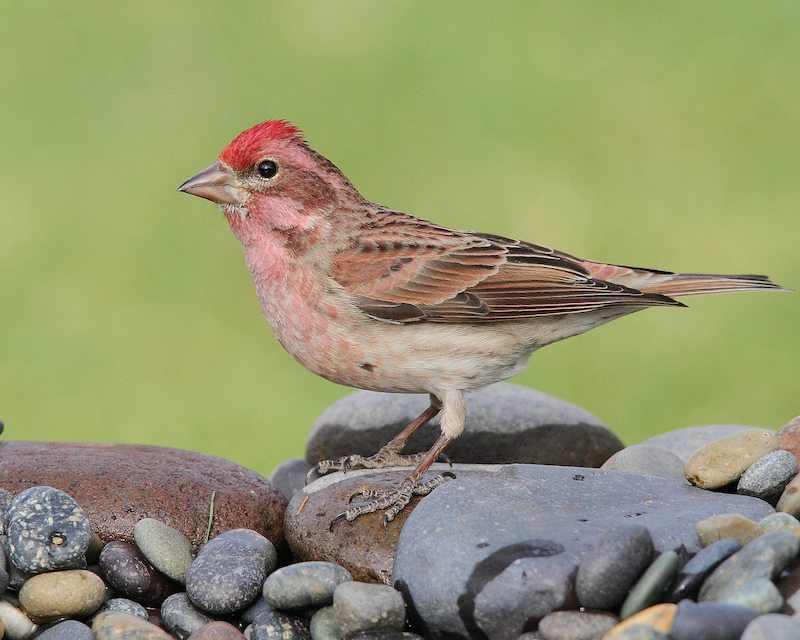(Photo above: Male Cassin’s Finch)
by Bob Walker
The Cassin’s Finch (Haemorhous cassinii) makes this week’s bird story not because it is a bird we have been seeing around town lately, but because we have not been seeing it. The graph below shows the average frequency of Cassin’s Finches reported to eBird in Los Alamos County in the January through March (winter) time frame for the last eight years. Each bar height is the frequency for that year’s winter.


Cassin’s Finches were fairly common in the late winters of 2010 and 2011, then were less common the next three years, and were really common in the winter of 2015. We have not had many reports at all in the last two years. Their unpredictable migration behavior suggests they are an irruptive species, like Pine Siskins, Evening Grosbeaks, Red Crossbills, and Red-breasted Nuthatches, moving in large flocks to new areas when their food supply is lacking in their normal wintering areas. Little detailed information exists for Cassin’s Finches, but what data there is suggests they migrate both latitudinally and altitudinally.
Cassin’s Finches are easily mistaken for House Finches (and vice versa), because of their similar coloration. But, there are several fairly easily recognized differences, if you look closely. Cassin’s Finch males tend to be much pinker than a House Finch male, their breasts and bellies are not streaked, and you may even see the Cassin’s Finch male raise his crown feathers in a small crest, like the bird above. The females are also brown-streaked birds, like House Finch females, but the Cassin’s streaking is much more sharply defined. Both sexes are larger in size than a House Finch, and have conical-shaped bills instead of curved upper bills. Compare to the House Finch photograph below:

Find more detailed articles about Cassin’s Finches on these web pages: identify.whatbird.com and allaboutbirds.org. You can see beautiful photos of Cassin’s Finches at the Brian Small and Jacob Spendelow web sites. For even more images, perform an image search on Google or Flickr, and you’ll find many good photographs.


Fascinating graph of frequency. I had heard there was quite a variation, but this is remarkable.
Saw a male in my yard this morning. I’m putting out a lot of suet and sunflower seed.
We have had them at our feeder intermittently as well.